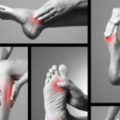Psychotherapy Bulletin
Psychotherapy Bulletin

The Pugilist and the Psychologist
Exploring the Impact of Becoming an Amateur Boxer on My Clinical Work
As a psychologist, I encourage my clients to step outside of their perceived limits or comfort zones for the betterment of their mental and emotional health. In graduate school, my professors stressed the importance of collaborating with clients in cultivating their ability to imagine themselves living holistic and healthier lives—useful for encouraging both optimism in treatment and adherence to treatment goals designed to reach this better version of themselves. To be helpful to the client, the vision must be obtainable, even if this “alternative life” is not currently realistic due to the overall functioning of the client. Through therapeutic delivery of encouragement, criticism, and pacing, clinicians can help manage the client’s stress and encourage motivation to work toward this desired destination.
An additional dynamic of this process is the reconfiguring of the client’s conceptions of “success” and “failure” in both treatment and in life. In conversations with both children and adults, I have noticed many of my clients becoming increasingly risk-averse regarding clinical interventions as their clinical challenges or time in therapy increases. This hesitation or procrastination to fully engage in therapy can cause significant disruption to the efficacy of treatment and it can cause further self-deprecating thoughts as clients blame themselves (or the clinician) for their lack of movement in treatment. With our privileged position on the “other side of the couch,” we often forget how difficult initiating drastic change can be and how daunting a task recovering from mental health challenges can be for someone so deeply impacted by these concerns.
Failure in Sports as a Learning Tool for Therapists
I struggled mightily with this when I was in graduate school as I was often frustrated by some of my clients’ lack of excitement over the potential for change and lack of consistent involvement in the process of change. Not only did I sometimes take their challenges in these areas as a negative reflection on my abilities as a psychotherapist, but I also may have allowed negative biases to creep in and impact my ability to be compassionate about their often-complex circumstances. While in the midst of this state, one of my supervisors at GSPP made a startling and random suggestion: I should try golf. After joking that every doctor should know how to play golf, the supervisor spoke about the true purpose of this suggestion. According to this professor, achievement-oriented adults like those in graduate school often maintain a high level of confidence and self-assurance by pruning tasks or activities with a high likelihood of failure from their lives. Although this behavior is healthy and appropriate for maintaining wellness, it can divorce these high achievers from experiencing and appreciating the totality of the learning process, including its inevitable setbacks, when attempting to adopt a new behavior or activity.
In taking up this unfamiliar sport, my supervisor envisioned me being exposed to the frustration and angst caused by struggling with a new challenge, as well as cultivating skills and strategies to support perseverance in adherence to the activity and the practice of the activity. Although undergoing psychotherapy is different from golf, golf did provide a microcosm in which I could engage in this type of experimentation with my coping resources, frustration tolerance, and motivational attitude. Through this experience, I recognized that I was less equipped to deal with failure than I initially thought, and I was fortunate for the opportunity to recognize this area for growth within the context of a low-risk situation such as sport. This recognition then afforded me the opportunity to make conscious behavioral and cognitive changes to better support a more tolerant approach to challenges and frustration. Golf also provided me with the opportunity to be in the role of student, whereas my professional role often places me in a position of perceived or actual power. To be the one seeking support and knowledge in this particular situation provided a great juxtaposition with my daily task of facilitating growth in others through collaboration with my clients. Currently, I encourage all in my community, especially adults, to regularly engage in new and difficult activities to keep close to failure and to help see failure more as a helpful aspect of learning than an opportunity for self-deprecation or humiliation.
“So You Mean to Tell Me That My Therapist Punches People!?!”
In the spirit of my time learning golf some seven years ago, I recently took up another new activity to test myself physically and to grow emotionally. In early January of this year, I decided to participate in a pediatric brain cancer charity boxing program called A Bout to Benefit after being exposed to the charity by a close peer. This program specifically targeted adults new to the sport of boxing to help introduce them through coaching at a popular Boston area boxing gym. The charity experience would culminate in a black tie affair where 18 of the fighters would fight in front of their friends and family at a special Fight Night event approximately three months later. My initial interest in this contest stemmed from my love of the sport during my childhood and my curiosity regarding how boxing could provide unique opportunities for personal growth, especially given how the sport has been known to improve self-esteem and confidence (Kumar, 2015). Most people primarily think of the real physical and neurological dangers of the sport when boxing comes up in conversation, and that is an important reality (Reed, 2015), but the positive aspects of the sport deserve attention as well. In addition to physical benefits, boxing can also assist people by providing opportunities for emotional growth. Research has demonstrated that there are many important cognitive and emotion regulation skills that are necessary to grow as a boxer, such as self-regulation, conscientiousness, and openness to experience (Khani, Farokhi, Shalchi, Angoori, & Ansari, 2011), all of which would be useful for a therapist or a client.
Clinical Implications
This experience would provide me with the opportunity to test those areas of my own functioning to observe how each area reacted to this stressor and provide information useful for strengthening my weaknesses and providing better awareness of my strengths. When assessing my conscientiousness, openness to experiences, and self-regulation, I would suggest that my strengths would be in openness to experience and conscientiousness while conversely, I would report that difficult sporting experiences could cause challenges with self-regulation. Before officially signing up for the event, I remember experiencing bouts of ambivalence and fear associated with the task. I remember worrying about embarrassing myself during the long training or on the fight night and I worried about the pain. I remember worrying about having to actually punch someone when violence has been so purposefully absent from my life as a known pacifist.
These hesitations were, in retrospect, similar to some of the common concerns that clients may have when they begin treatment. Most clients express some reservations about beginning therapy, and many of these reservations are related to the potential of the therapy being harmful when the client is already in a vulnerable state. In addition to having fears about therapy contributing to worsening of their symptoms, many in the community harbor numerous myths about therapists and the therapeutic process that contribute to individuals refusing treatment (American Psychological Association, 2017). To assist with transitioning through these feelings, we, as clinicians, need to emphasize the positives of the experience and the ways in which engaging actively and wholeheartedly in therapy can be beneficial, both in the short term and long term. Similarly, as I started this boxing process, I needed a helpful and understanding coach to help orient me to the sport of boxing and help me better understand the structure of the sport and soothe any rational or irrational concerns that I might have had about my participation.
At the gym, I found myself reflecting about how my coaching mirrored that of common therapist-client relationships, especially given how important the relationship is in the eventual outcome of both boxing and psychotherapy (Falkenström & Larsson, 2017). Like a client, I was heavily reliant upon my coach to help me acculturate to this new world of boxing and learn how to navigate unfamiliar jargon. In addition to expecting him to initially lead me in this journey, I was also cognizant of the trust building that would be essential in order for us to be successful and, more importantly, safe. At the beginning of our training, I believed that I needed to convince my coach that I was motivated for training and receptive to his teachings and, conversely, I needed my coach to convince me that he was knowledgeable about boxing and taking appropriate steps to ensure my safety throughout this process. The fear I felt at the inception of my training might be similar to the fear new clients experience as they transition into psychotherapy, especially if it is their first experience in psychotherapy. To continue to provide a successful transition into therapy, I can utilize this experience to remind myself to emphasize in my communications with clients that I will work diligently to ensure their emotional and physical safety. Additionally, I will also highlight my psychological knowledge and a willingness and eagerness to learn about the patient’s experiences while also highlighting the potential positives that could come from successful implementation of clinical strategies and interventions.
After overcoming my initial fear of beginning my training, I had to cope with a boxer’s relationship with physical pain. As a former collegiate lacrosse player and a finisher of the Boston Marathon, I am familiar with athletic pain, fatigue, and discomfort—but this was different. As many warned me before starting my training: Boxing is one of the most physically demanding sports on earth. In addition to needing incredible strength to land punches with force and to protect your body from incoming assaults, boxing also requires significant cardiovascular strength in order to “stay busy” during each of the three fast-paced rounds with limited rest in between. Each training session was more grueling than the next as our coach slowly introduced us mentally and physically to the realities of life as an amateur boxer and the pain accompanying that title. When reflecting upon my response to the pain, I was reminded about how all-consuming the pain was and how much it preoccupied my thoughts. As training sessions vacillated between easy and difficult, I found my mind drifting towards more pessimistic thoughts that undermined my goals during more difficult days at the gym. Several times I was able to notice the impact of this pain on my thought process and utilize learned cognitive restructuring processes to address these irrational thoughts. These situations reminded me how easy it is to allow irrational thoughts to creep into one’s thinking while experiencing such a highly physiological response to stress. For example, I thought about how, when patients experience significant physical symptoms related to depression (e.g., lethargy), anxiety (e.g., panic attacks, high heart rate), or other mental health concerns, the patient could be more susceptible to thinking errors because of how difficult it is to ignore physical discomfort or pain. At work, I utilized this insight to emphasize the compassion that I needed to have for not only the cognitive distress my clients were experiencing, but also the daily barrage of physical pain or psychosomatic discomfort they might be enduring due to their psychological health. Compassion for this specific area of their experience helped me focus on addressing those symptoms with a level of strength and effort commensurate to what I would expend working on cognitive or thought challenges. As my own training progressed, I found myself beginning to prescribe more psychosomatic interventions and suggesting more strategies that sought to reduce the bodily arousal or numbness in the lives of my clients, with the goal of assisting each in engaging more in thoughtful cognitive interventions.
Conclusion
Although I won two other fights, that particular charity fight did end in a loss by decision. Even thought I was disappointed with the result of the contest, both the loss itself and the experience as a whole provided me with a great opportunity to learn more about myself as a person and as a psychologist. The lessons that I will take from this experience will continue to build empathy toward my brave clients and encourage me to engage in psychotherapy enthusiastically as their “coach” and team member. For myself, I will forever remember this experience as a test of my limits and an opportunity to try something different and challenging, a marker of the curiosity and ferocity for new experiences that I hope never dies and only grows as I get older.
Cite This Article
Jenkins, J. (2017). The pugilist and the psychologist: Exploring the impact of becoming an amateur boxer on my clinical work. Psychotherapy Bulletin, 52(2), 52-55.
References
American Psychological Association (2017). Psychotherapy: Myths versus reality. American Psychological Association. Retrieved from http://www.apa.org/helpcenter/psychotherapy-myths.aspx
Falkenström, F., & Larsson, M. H. (2017). The working alliance: From global outcome prediction to micro-analyses of within-session fluctuations. Psychoanalytic Inquiry, 37(3), 167-178. doi: 10.1080/07351690.2017.1285186
Khani, M., Farokhi, A., Shalchi, B., Angoori, P., & Ansari, A. (2011). The relationship of personality dimensions and self-regulation components to the success of Iranian boxers. Serbian Journal of Sports Sciences, 5(1), 21-28.
Kumar, R. (2015). A comparative study of self confidence among boxers and wrestlers of Hyderabad in India. American Association for Science and Technology Journal of Psychology, 1(1), 1-4.
Reed, R. (2015, December 8). More brain injuries caused by sparring than real fights. Herald Sun. Retrieved from http://www.heraldsun.com.au/sport/boxing-mma/more-brain-injuries-caused-by-sparring-than-real-fights/news-story/258aa1bd5e7d7823d3ddb102310f1dba





0 Comments